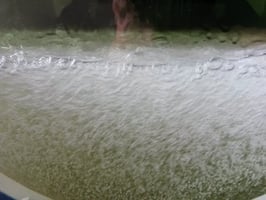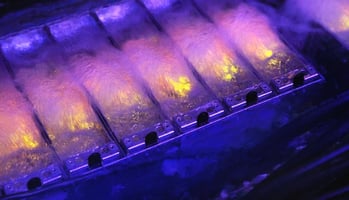The flammability potential of electrical motors and fans used in Computer Room Air Conditioning...
But What About Silicone fluid?
I received an interesting question last week, about the use of silicone fluid to cool electronics. Electrical grade silicone fluid has been used to insulate power transformers since the 1970s, and I’ve worked with silicone fluid for many years. Here’s the story:
PDMS (for Poly Dimethyl Siloxane) is the chemical term for electrical grade silicone fluid, such as Dow Corning DC-561, Xiameter PMX fluids, GE SF-97, etc. (all trademarks of their respective owners). These fluids were developed in the 1970s for use as PCB replacements in power transformers. As such, they are compatible with the materials used to build transformers: kraft paper, mica, oak and maple wood, and PVC-jacketed copper and aluminum wire. Whether or not silicone fluids are compatible with circuit board fiberglass substrate or the thousands of materials found in electronic circuitry is another question. Our testing showed that silicone fluid can react with the types of rubber used to seal electrolytic capacitors, causing the electrolyte to leak out. We decided that this alone was enough to disqualify silicone from consideration in data centers.
Another problem with PDMS is its very low rate of biodegradation. When spilled, liquid silicone fluid can remain in the environment for years. "Liquid rocks" is how I heard a Dow Corning specialist refer to spilled silicone fluid once. PDMS can be toxic to aquatic organisms and is considered accumulative in mammals. And when it burns, it creates a noxious silicone dioxide ash that’s dangerous to breathe.
So, PDMS fluids are similar to PCB fluids in some ways - as long as these fluids are used in sealed systems that they were designed for, then they'll work fine. The problems happen when these fluids are spilled, recycled, handled, or used in systems that they weren't designed for.



